Ask Ethan: Can the stars escape from the galaxy without damaging the planet?
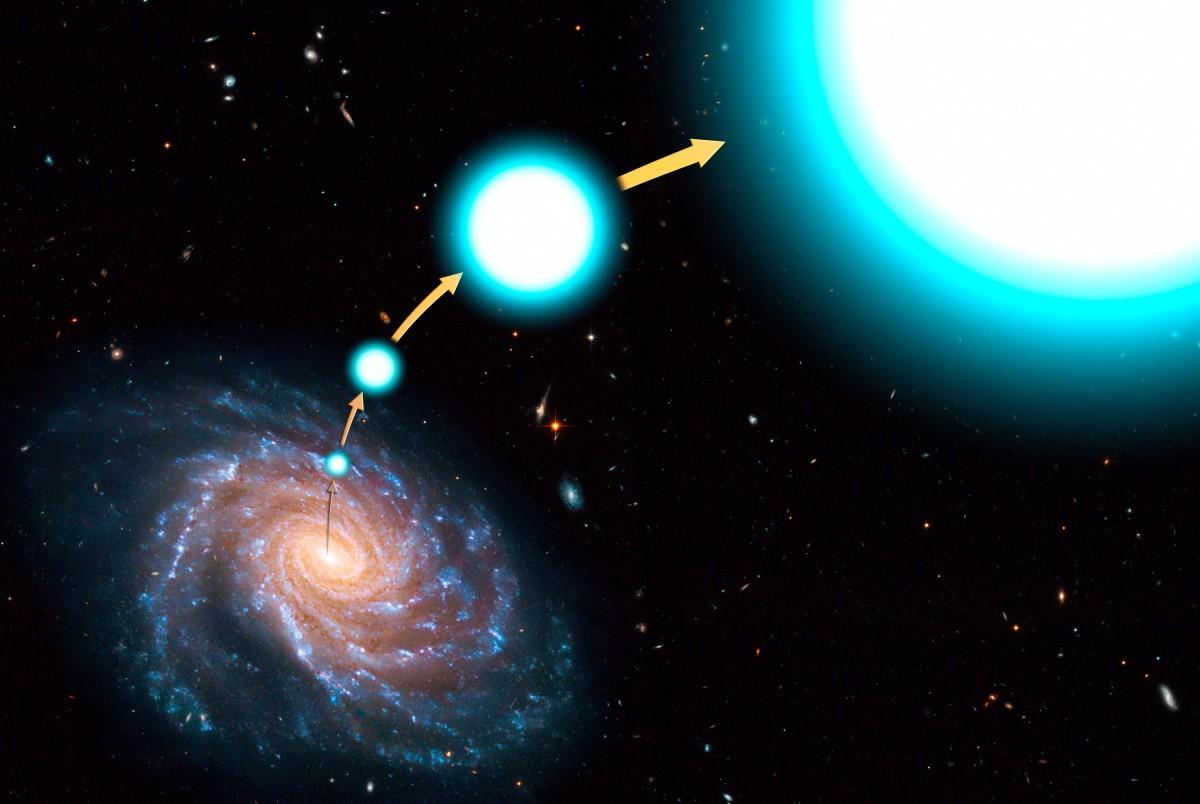
Although the stars in our galaxy will live for billions of years, sometimes a catastrophe can happen to one of them, which will throw it out of a stable orbit in the galaxy. Could it be that this star will not just descend from orbit, but also permanently leave the galaxy? And if so, can it be that it will be able to hold its planets, as a result of which a habitable intergalactic world will appear, in which your “sun” (and possibly several other planets) will be the only visible stars? Our reader this week asks:
Can a star escape from the gravitational pull of the galaxy? If so, can she grab planets orbiting around her? If so, and if you find yourself on such a planet and look into the night sky, will you see constellations consisting of galaxies?
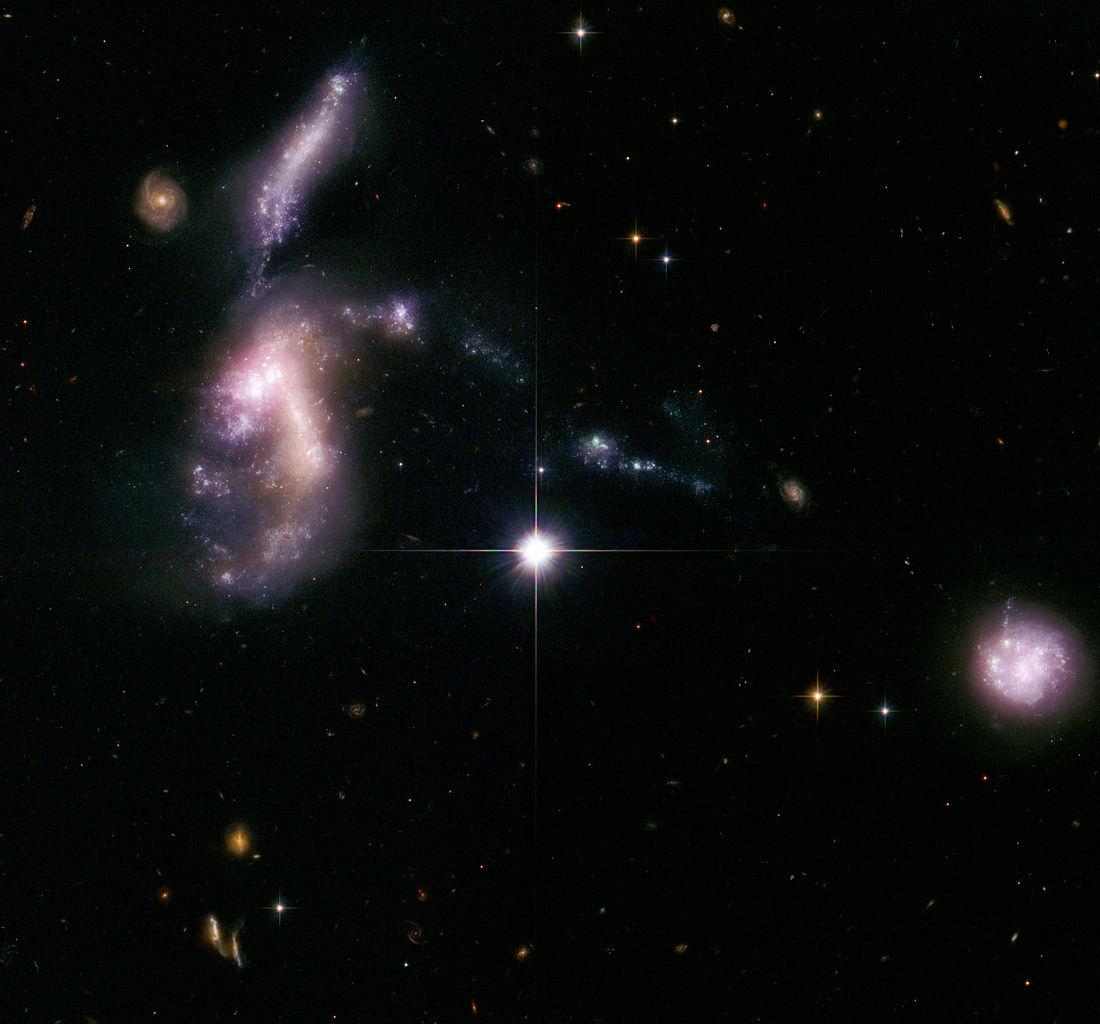
Hickson Compact Group 31 , Hubble snapshot. A beautiful “constellation”, but comparable in brightness to several stars from our galaxy - they can be distinguished by diffraction rays
When you look at the stars in the night sky, you may be left with the surprising realization that all of them are in our Milky Way galaxy. Moreover, almost all the stars that we can see are located a few hundred light-years from Earth - and this is a trifle on galactic scales. Like our Sun, they move around the center of our Galaxy with a speed of about 220 km / s, most of them move relative to this rotation with a speed of ± 20 km / s, therefore the relative position of the stars changes with time. Virtually each of them is not just a fiery ball of nuclear fusion and light, but most likely an owner of its own solar system, along with the planets, and sometimes with other stars. For the most part, these stars simply move around the galaxy in a neat, stable orbit, due to the fact that the attraction of the Milky Way is quite predictable, and that other stars pass near them quite rarely.
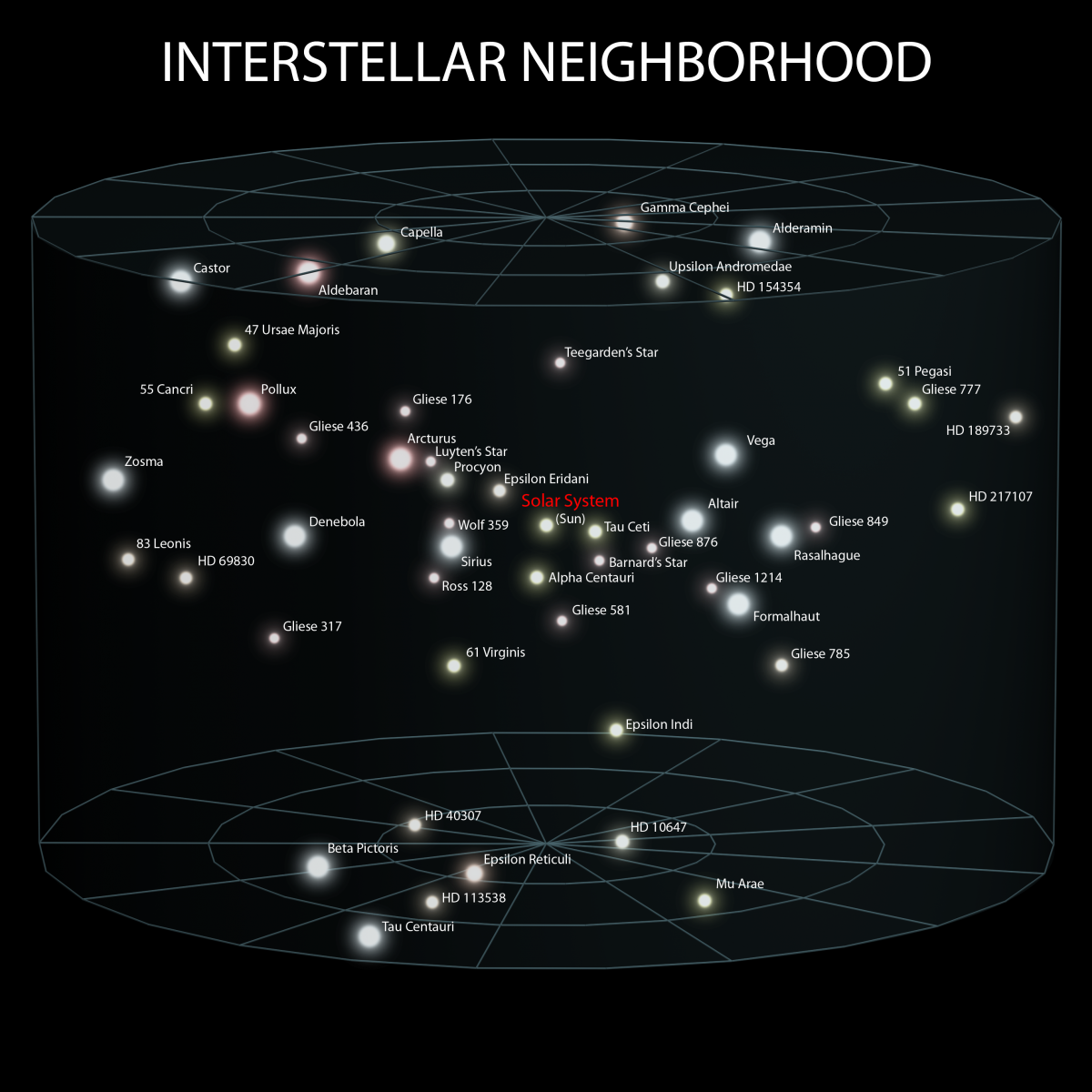
The distances between the Sun and many nearby stars are shown correctly, but if the drawing were to scale, even the largest of the stars would have been smaller in size than one millionth of a pixel.
But the stars live for a very long time, and although the distances between them are huge, rapprochements occur quite regularly. Although a speed of ~ 220 km / s is enough to move in an almost circular orbit around the galactic center, a few hundred km / s will be enough to completely leave the galaxy. Based on the results of the RAVE experiment (experiment with radial velocity), where data on a hundred high-speed stars were collected, we determined that the total mass of the Milky Way is about 1.6 trillion solar, which means that the escape rate at our distance from the center will be span of 500-550 km / s. An extra push at a speed of 300 km / s in the right direction - and we will begin to move into intergalactic space.
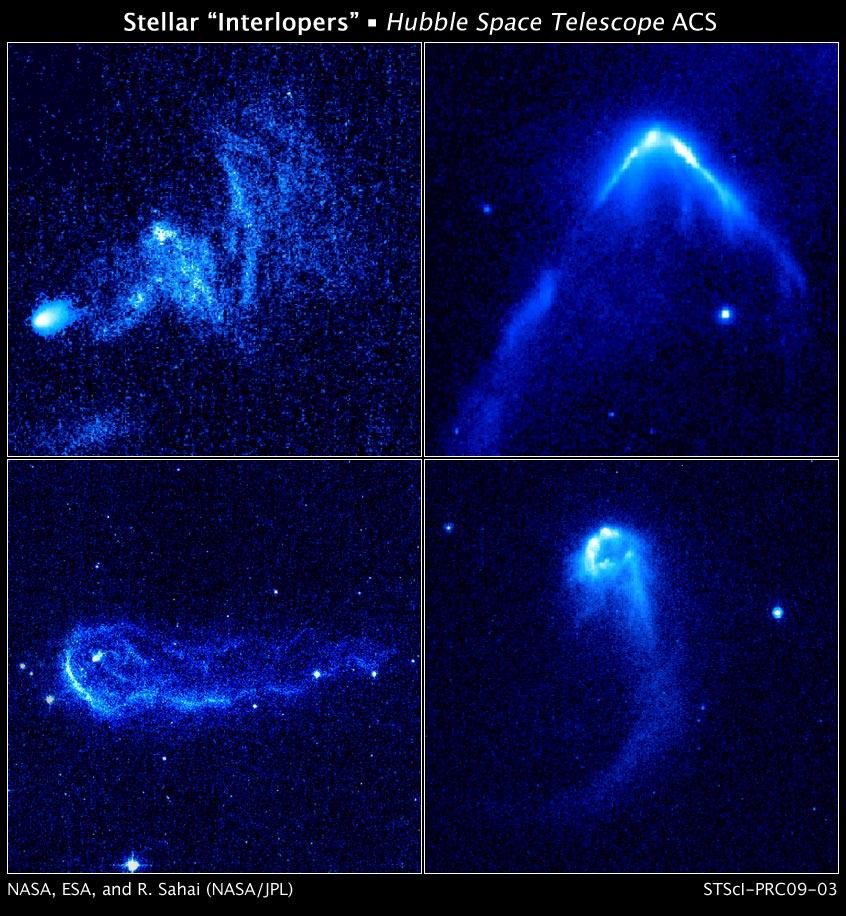
Four runaway stars make their way through areas with dense interstellar gas, leaving bright waves and traces of glowing gas.
Close gravitational interaction of stars is not such a rare phenomenon. About once in a million years, the star comes close to the Oort cloud , and probably five times in our history, the star approached us at a distance of the Kuiper belt . In our galaxy there are several so fast moving stars that we are confident that they recently received gravitational acceleration from some mass — like a World star, which leaves a tail behind itself due to its rapid movement through interstellar space.
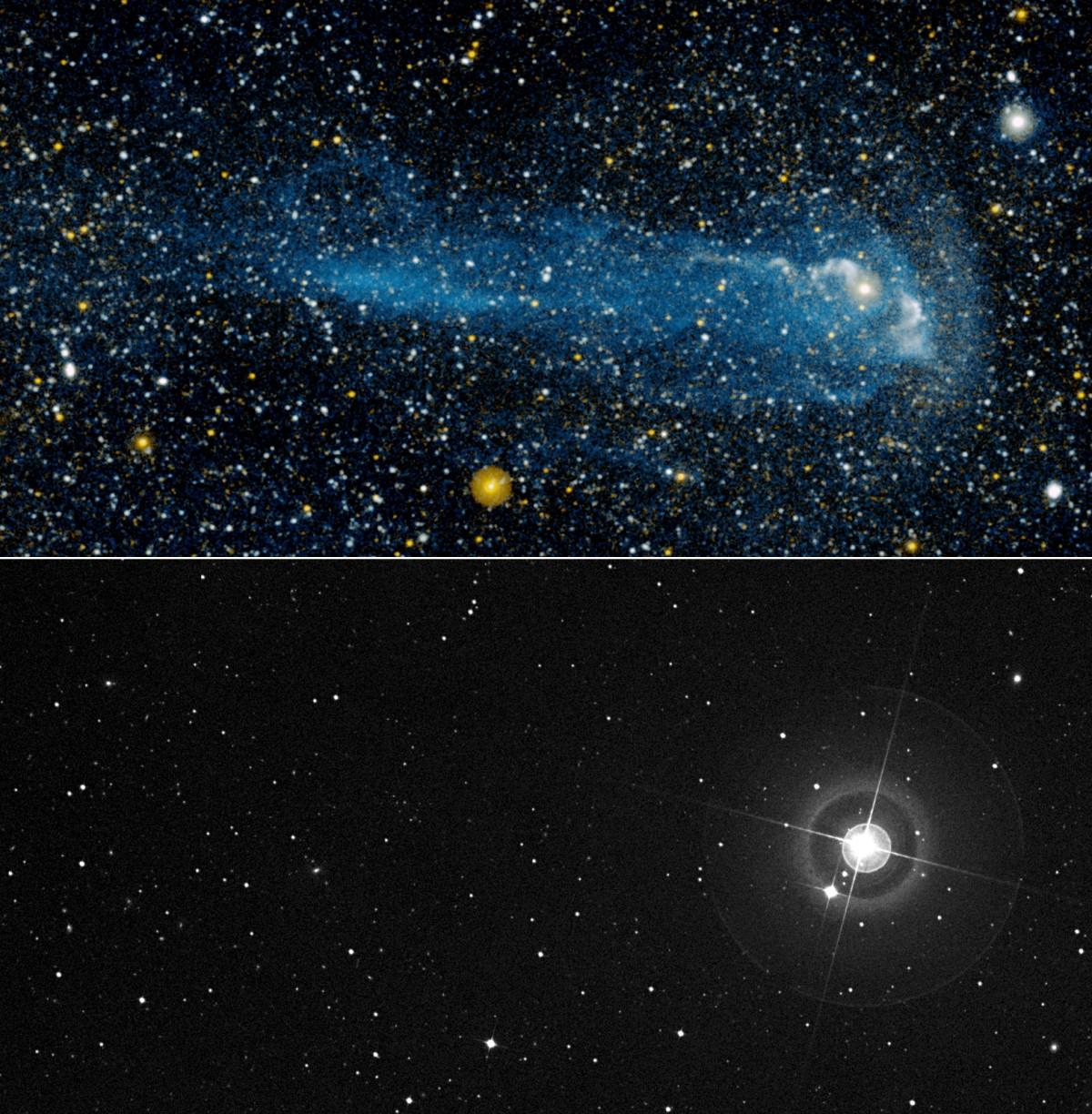
The world, moving at an additional speed of “only” 63 km / s, will not leave our Galaxy in the near future, but it should be noted that it has a companion, a white dwarf - and this means that strong “kicks” of gravity is not enough in order to break the solar system! We can look at the fastest star of the Milky Way - US 708 - to get acquainted with the runaway star. The speed of 1200 km / s could be obtained from a supernova (perhaps even from a rare supernova “double explosion”), and now it is leaving the Milky Way.
There must be a large number of stars in intergalactic space, since the universe had more than ten billion years to throw stars out of their galaxies. Moreover, the regions of star formation — open and globular clusters — are extremely dense, with many stars in each small space, and many possibilities for triggering the effect of gravitational sling . There is an effect that has been so well studied and calculated in simulations that we have a special term for it: violent relaxation. When a cluster of masses of different sizes are accumulated, connected by gravity together, the lightest masses are often thrown out of the cluster at dangerous speeds, and the remaining ones become bound even more strongly. This explains why some of the oldest globular clusters are so heavily concentrated around the center.
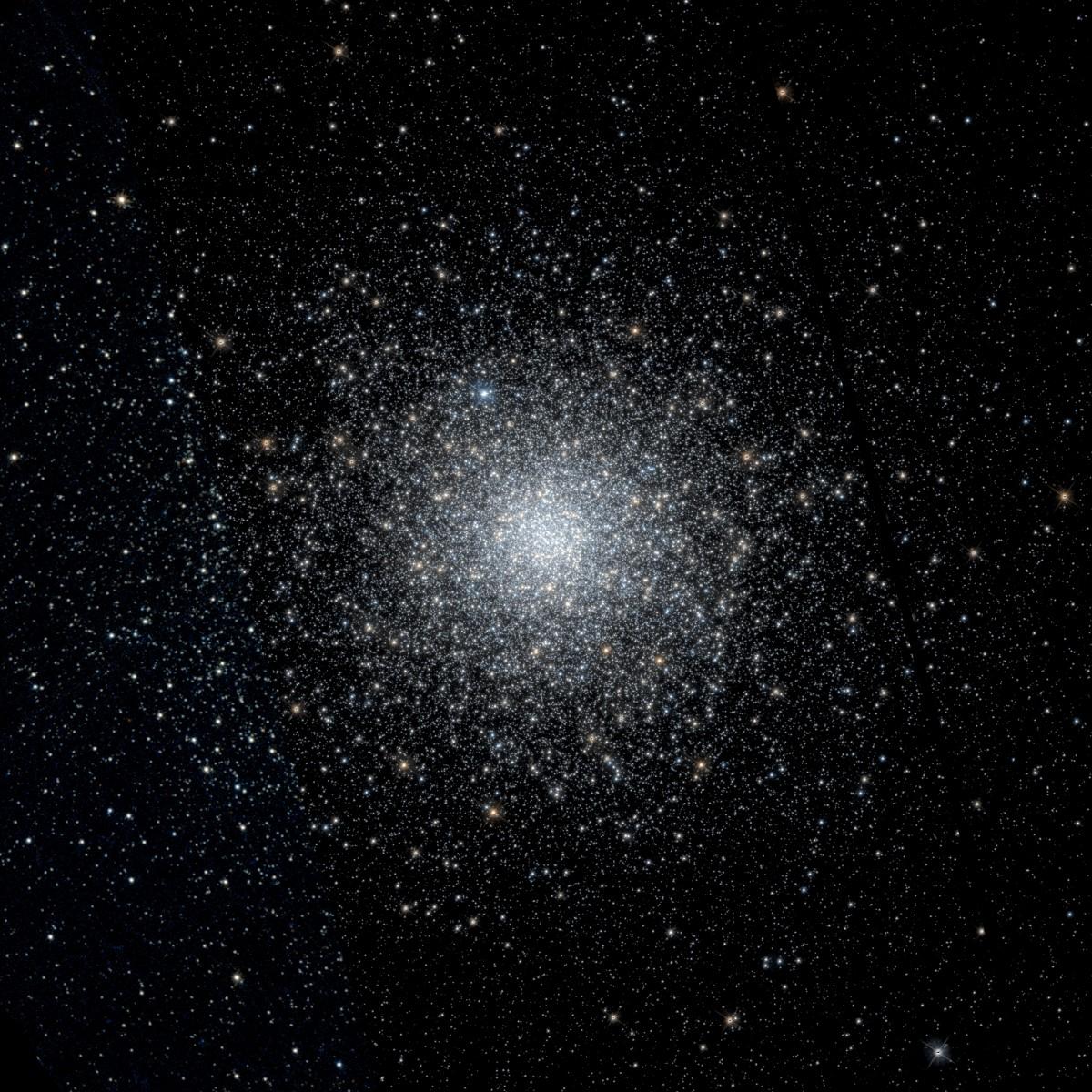
Messier Globular Cluster 75, with strong concentration around the center. Its age exceeds 13 billion years.
And although the interaction that is taking place too close to the planet may also throw her out, simulations show that these cases are rare and that most of the planets should remain in place. And although almost one million stars may be ejected from the Milky Way by this time, our Universe is still quite young. After many quadrillion years, this number will increase, and most of the stars that existed in the Milky Way will be thrown out, including perhaps what remains of our Sun. The first intergalactic stars were discovered in the cluster of Virgo in 1997, which proves that this phenomenon has been working for a long time.
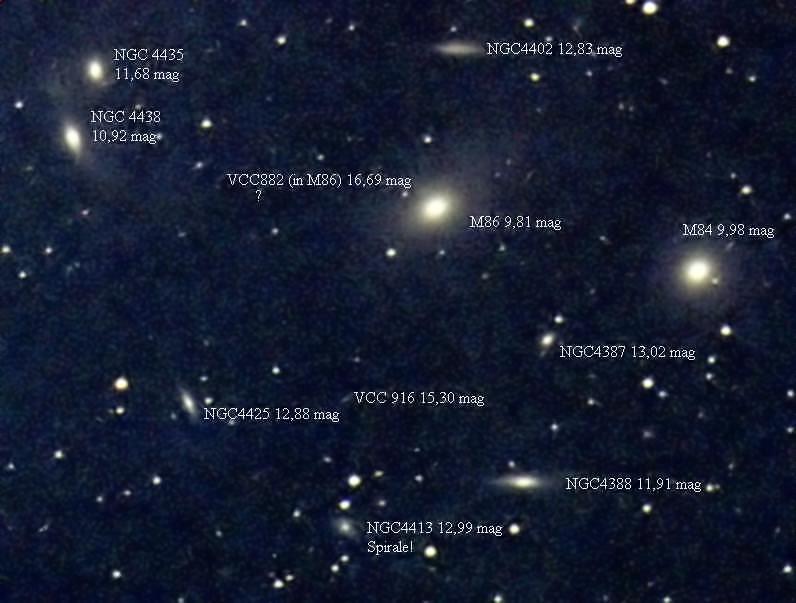
Either due to gravitational kicks or supernova shocks, stars constantly fly out of galaxies. After that, they find themselves in intergalactic space, the night sky of which is illuminated only by distant galaxies, which may look like a shot from a beautiful film based on the Sloan sky survey: Flight Through The Universe.
What will be visible will not resemble a constellation, but will outline the large-scale structure of the Universe. Perhaps in such a situation you would be wondering why your Sun is the only light in the night sky, and why you are so unlucky that you see only distant blots. Do they consist of billions of stars resembling yours, while you are very unlucky enough to be alone? Or are you on the contrary, lucky to see the whole universe, which is not obstructed by the galaxy? It all depends on the point of view!
All Articles